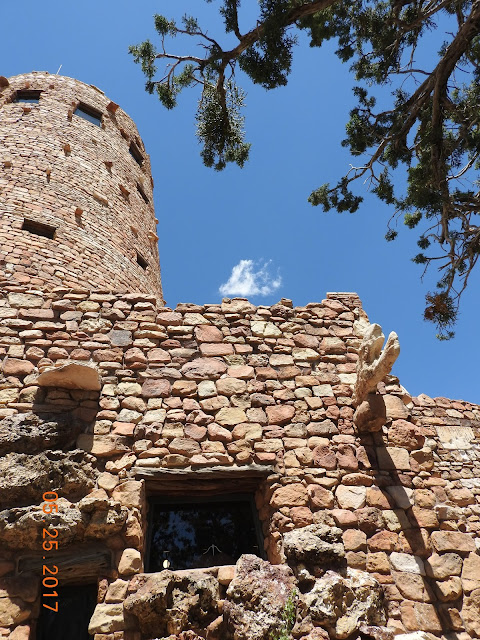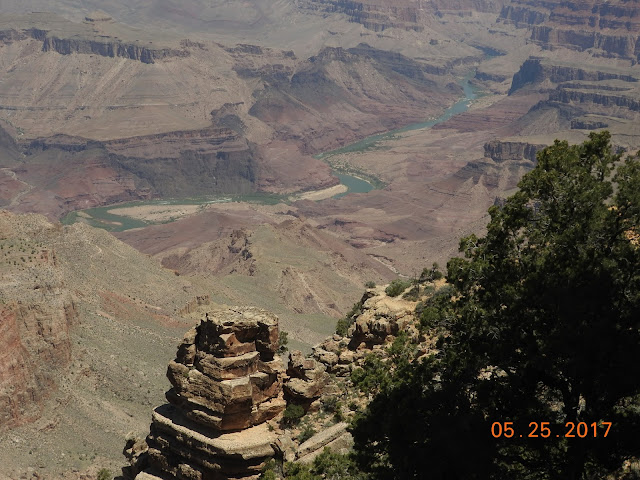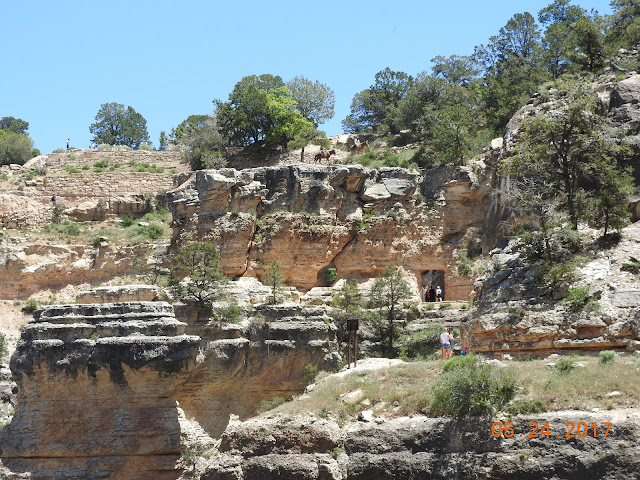Desert View Watchtower is a 70 foot high, 4 story building built by Colter for the Santa Fe Railroad. The company had realized that tourism was an important part of their business plan, and they needed another "destination" for Grand Canyon visitors on the eastern end of the park. Like Hopi House, Desert View embodied the architectural philosophy of Mary Jane Colter.
The story is told that the construction workers, realizing that she had left the building site for a period of time, began to work in earnest. When she returned and found a course of bricks not to her liking, Colter had them rip out the stones that weren't "correct" and find better stones. Quoting from one of her biographers, "Colter's philosophy was that a building should grow out of its setting, embodying the history and flavor of the location. It should belong to its environment as though indigenous to that spot. She could not visualize the design of a building or plan its decoration until she had thought out its 'history.'"
Note the balolookong on the right corner of the building. This is a Hopi mythical snake, the Great Plumed Serpent.
This is from the roof of the first floor. Note the different colors of stone that she purposefully designed into the building. Colter lived with the Hopi at several different times so she could understand their pueblo building style.
Looking back to Desert View from Moran Point - the next point to the west (about 3 miles away).
But a building is more than just an exterior, and Mary Jane Colter was also very exacting in how she decorated a building. These pieces are designed to look old, but were installed in the building in 1932.


This is a 180 degree panorama of the first floor interior.
Desert View Watchtower is an incredible building. And the view of the Colorado River is just as spectacular. The Colorado has been flowing south for about 35 miles, from Glen Canyon Dam through Marble Canyon. The river then swings hard to the west, right at the base of Desert View. For Mary Jane Colter, the choice of this location was no coincidence.

The green ribbon below is the Colorado River, over 300 feet wide (as wide as a football field is long).
The Colorado River is 1450 miles from the Rockies in Colorado to the Gulf of California.
It runs 277 miles through Grand Canyon National Park.















































